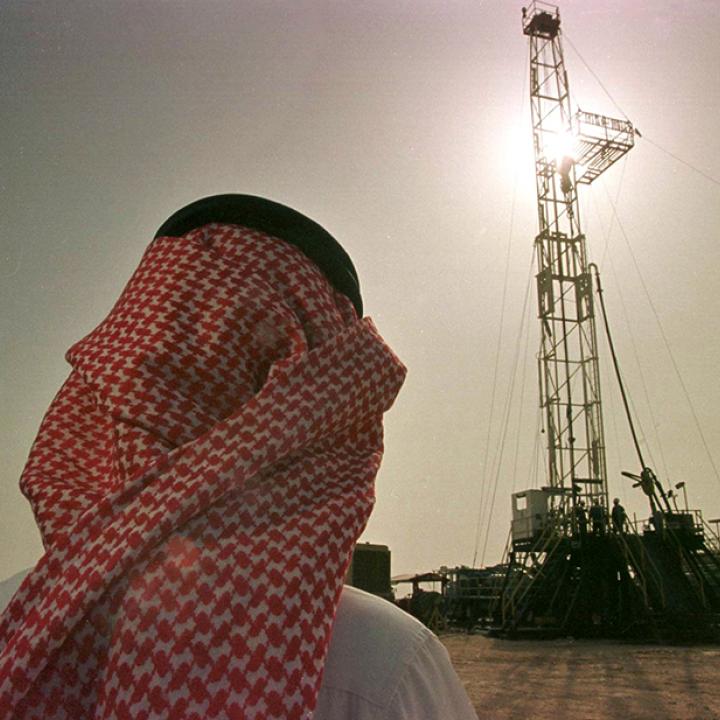The annual report of the Paris-based International Energy Agency (IEA) does not usually produce major headlines. But the latest installment, released June 12, will attract the attention of businesses and decisionmakers across the world. The Financial Times plastered the story on its front page with the heading “Energy watchdog foresees ‘staggering’ oil glut while producers keep pumping”; similarly, the Wall Street Journal declared that “The world will be swimming in excess oil by end of this decade.”
While overall oil demand is predicted to peak around 2029 and start contracting in 2030, the United States and other non-OPEC producers are expected to expand their output. Current global production is around 100 million barrels per day but will reach an estimated 106 mb/d in 2029. Oil supply capacity is projected to reach almost 114 mb/d over the same period, an 8 mb/d increase that the IEA described as “staggering.”
For Washington and many other governments, this forecast is awkward. Politicians in consumer countries always welcome lower prices at the fuel pump, and they are traditionally more concerned with the immediate future than what may happen five years ahead. Yet the predicted oil glut means that Middle East partners may be less able to help out financially with regional issues, afford major arms purchases, provide generous subsidies to their people, and so forth. U.S. support for partners like Egypt—a significant oil producer with a large population—would become more crucial.
Of course, the forecast is just that, a forecast, and many factors could alter it between now and 2030. The price of Brent crude, the international benchmark, is currently around $82 per barrel but recently fell below $80, down from a peak of $122 in 2022. The OPEC+ cartel, which combines the Saudi-led OPEC and a loose collective of Russian-led producers, has been trying to reverse the supply cuts it previously instituted to prop up the price. The IEA report will make that task more challenging.
OPEC+ production currently makes up 48.5 percent of the global total, yet this market share is less than what the mega-cartel commanded when it was established in 2016. In addition to the United States, the other significant non-OPEC+ producers who are expanding production include Argentina, Brazil, Canada, and Guyana.
As IEA director Fatih Birol noted, “It is time for many producers to look at their business plans.” Yet cartel predictions are more optimistic than the agency’s—OPEC secretary-general Haitham al-Ghais described the IEA’s latest forecast as “dangerous,” warning of energy chaos if producers stop investing.
Impact on OPEC+
Major regional oil players such as Kuwait, Iran, Saudi Arabia, and the United Arab Emirates would be most affected by falling prices, which would also undermine OPEC’s leverage as a cartel. The last major price drop was during the COVID-19 epidemic, when Brent crude plummeted to $51 per barrel.
In Iran, increasing illicit oil exports (assuming sanctions are still in place) would not provide as much relief for limited government revenues as it does today. Among other consequences, this could spur another surge in economic discontent and mass protests.
For Saudi Arabia, the largest regional producer, high prices are needed to finance Crown Prince Muhammad bin Salman’s Vision 2030 project. Less revenue would likely mean delays that are challenging to explain given all the promises made so far. Ironically, Saudi oil wealth is now intended to move the kingdom away from oil dependence in the long term.
The revenues of major natural gas producers such as Qatar, which has the world’s third-largest reserves after Russia and Iran, will probably be less affected given the loose linkage between oil and gas prices. Iran’s main gas field is less well-exploited and therefore less of a buffer if oil revenue plummets, but the UAE may be shielded somewhat because it has been trying to build up its gas exports.
Russia remains a major oil producer and may be hit hard over the next few years, particularly if the Ukraine war and sanctions continue. China is mainly an importer, however, and may reap some advantages as a result.
Why Is Oil Demand Expected to Plateau?
Apart from the world shifting from gas-fueled vehicles to electric, key Middle East countries such as Saudi Arabia are switching to solar and other renewables to generate electricity. Ironically, this also leaves more oil available for export. The IEA also mentioned the expected decrease in China’s economic growth rate as a brake on oil demand.
As the agency itself noted, however, a fall in oil prices could also make gas-powered cars cheaper and more attractive. India, the world’s largest developing economy, is already increasing its use of such vehicles. Any reduction in the rate of electric vehicle growth could also have an impact.
Indeed, the IEA’s forecast will be tested in the coming months as other researchers release their own predictions. Regardless of how the supply/demand calculations shake out, however, Middle East governments need to redo their oil math—whether they admit it or not. Their economies and, by extension, their domestic and regional power depend on making clear-eyed decisions well before 2030.

